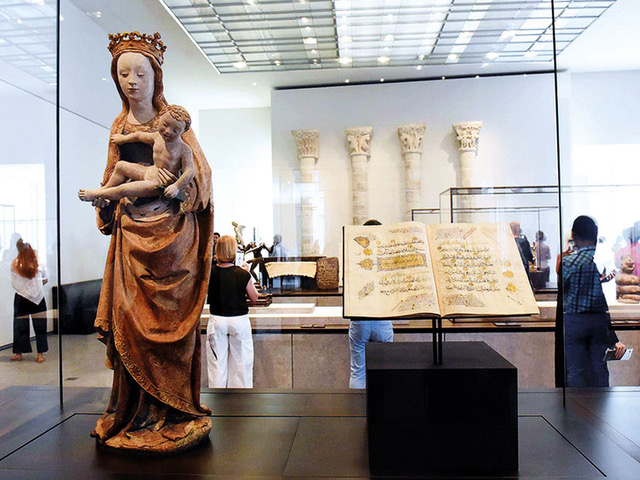3. TOWARDS A UNIVERSAL NARRATIVE
We have said that to work as curators in such a challenging scenario means contributing to creating a universal narrative. If time perception between past and present is blurred in favor of the future, the newborn Louvre Abu Dhabi is the case in point of a museum that wants to level hierarchies when we look at history. History at Louvre Abu Dhabi represents the polyphony of multiple stories and voices that transcend geographies.
But, what does “being universal” mean? For Louvre Abu Dhabi, it means focusing on what unites us: the stories of mankind’s achievements that go beyond geographical classification, times, or places. It means to bring different cultures together to shine fresh light on the shared stories of humanity.
The galleries at Louvre Abu Dhabi cover from Prehistory to the present day, and — as it has just been said — they are not separated by geography but in chronological order. The artifacts and works of art are juxtaposed, and somehow, they overlap what happened in several regions of the world at the same time aiming at grabbing their specific Zeitgeist.
What stands out in this new presentation is that what was previously considered a specialized area of study deemed as ‘marginal’ is now investigated as a central narrative amongst the others.
This approach expands on the assumed canons and allows us to avoid ghettoizing themes such as “black art”, “queer art”, “women art”, and so forth. For instance, in their gallery number four, named “Universal Religions”, in the same room we find a statue of the Virgin Mary with Child, a copy of the Blue Qur’an, and a gold statue of a Buddha. The symbols of the three main religions and philosophies are in dialogue one with another under the overarching theme of “Divine Light”. Light has been symbolically chosen as a link with spirituality and since time immemorial. In the gallery, light becomes the common thread for all great religions and philosophies that associate it with revelation: whether it is in the Surah of the Qur’an or the Halo of the Saints represented in Christianity, both as impalpable expressions of the divine, or up to the “Enlightened One”, namely the presence of the statue of Buddha made of gold, which is a tangible manifestation of the radiant light.
What Louvre Abu Dhabi teaches us about curating in the 21st Century is that our approach is a constant struggle to oppose cultural structures of domination. We, only we – art professionals – can imagine alternative perspectives for a transformed future by interrogating our work in terms of curatorial activism. The civic dimension in the role of today’s curators plays a pivotal part in giving voice to unheard artists, as well as in questioning the functions that museums have to fulfill to close the gap between policy and practice in Western and non-Western art institutions.


